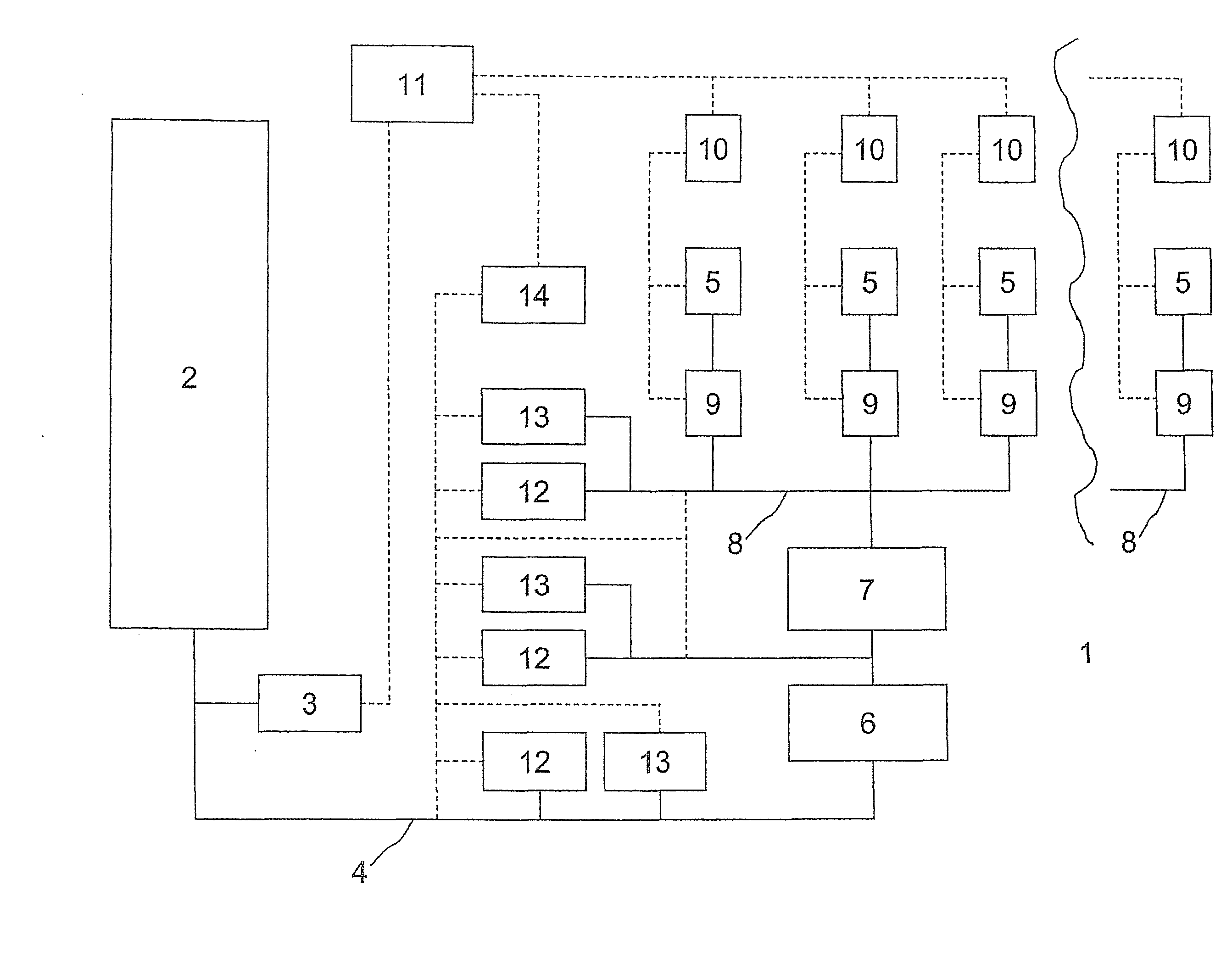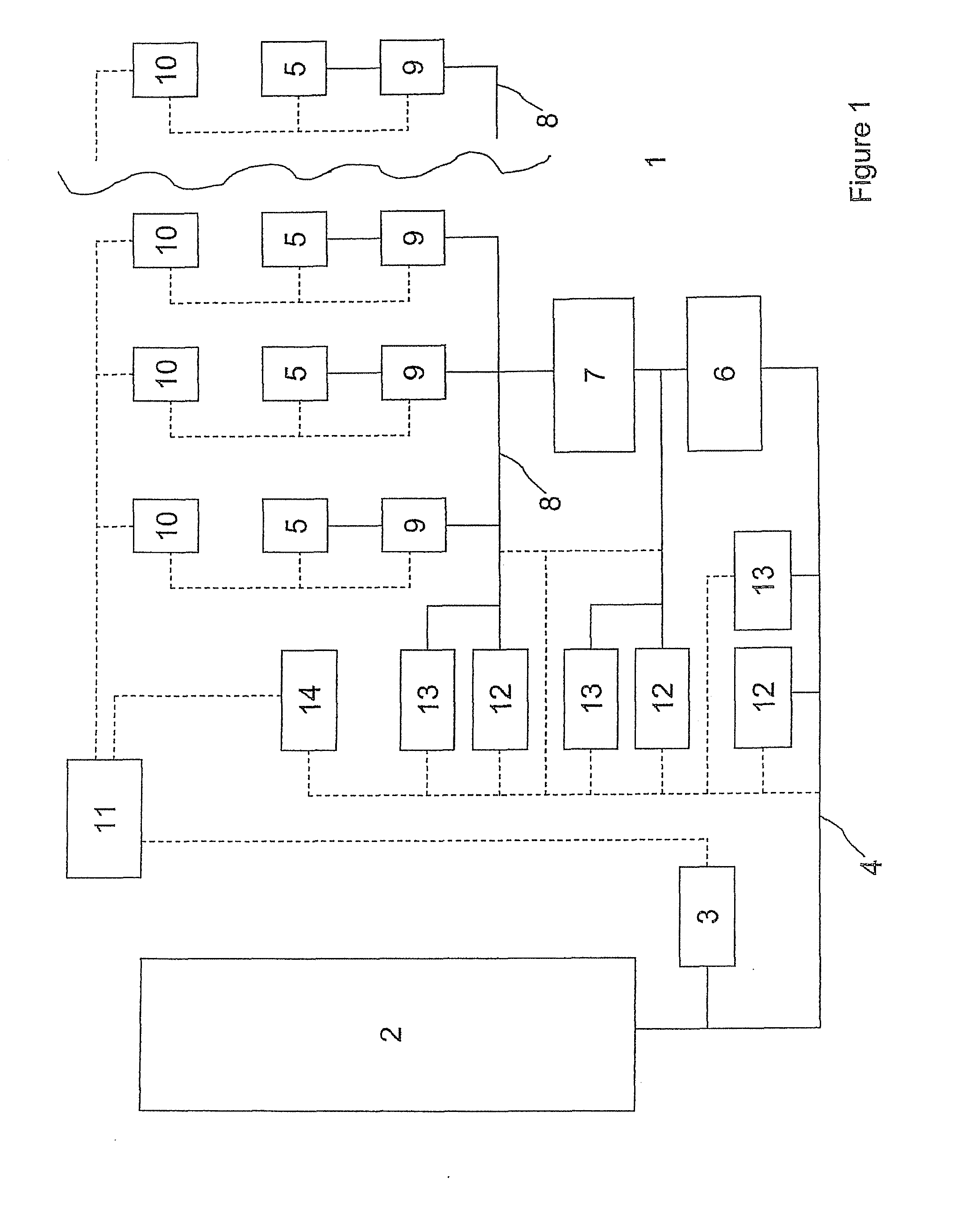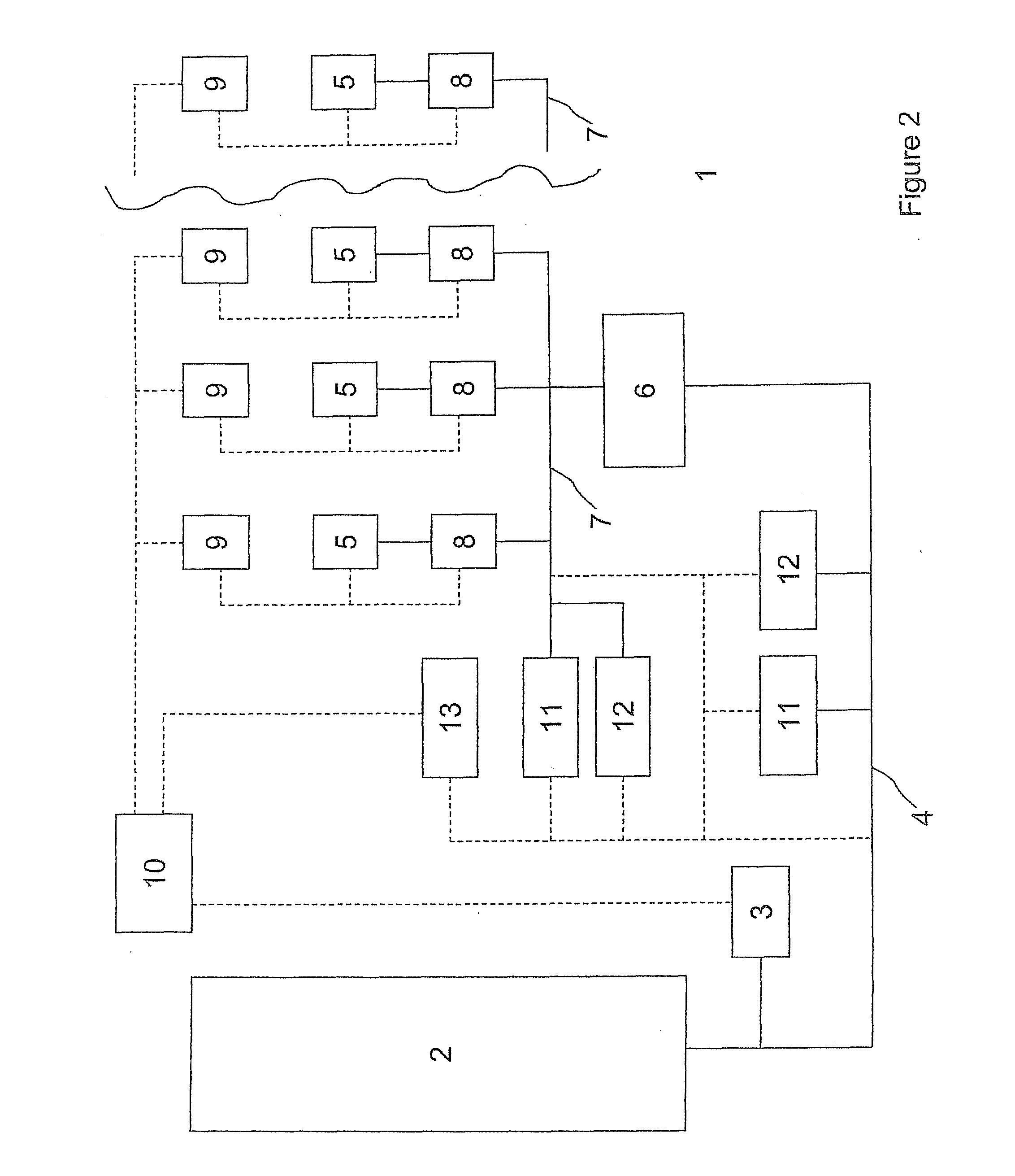Power dispatch system for electrolytic production of hydrogen from wind power
a technology of power dispatch system and wind power, which is applied in the direction of electrical storage system, greenhouse gas reduction, instruments, etc., can solve the problems of reducing efficiency and power factor, reducing harmonics, and reducing efficiency, so as to reduce losses, increase losses, and increase the effect of estimation frequency
- Summary
- Abstract
- Description
- Claims
- Application Information
AI Technical Summary
Benefits of technology
Problems solved by technology
Method used
Image
Examples
example 1
[0121]A power distribution system according to the present invention was simulated by a computer model, using data from a nominal 51 MW wind farm. Second-by-second data for one week, high yield and low yield periods were used. The power transmission and conversion path efficiency was assumed to be flat at 97%. The electrolyser modules were rated at 3 MW maximum (7,500 A and nominal 400 V). The number of electrolyser modules used was 17. The cell voltage was assumed to be 2.0 V / cell at all operating currents as an approximation. The electrolyser module current ramp rate was 0.5% of the maximum current per second, or 37.5 A / s based on the maximum current of 7,500 A. The electrolyser module low minimum current was 375 A (5% of the maximum current) and the high minimum current was 562.5 A (7.5% of the maximum current). The delay time for a decision to turn an electrolyser module on or off was 10 seconds. The electrolyser modules were turned on or off one at a time. The time interval for...
example 2
[0123]Next, the effect of varying the current ramp rate in the computer model simulation of Example 1 was investigated. The effects of power measurement delay and error were again neglected. The results are shown in Table 1. Current ramp rates greater than or equal to 0.25% of the maximum current rating of 7500 A resulted in overall energy capture of 99.5% or better; ramp rates greater than or equal to 0.5% of the maximum current rating resulted in overall energy capture of 99.7% or better; and, ramp rates of 1% resulted in overall energy capture of 99.85% or better.
TABLE 1Effect of Current Ramp Rate on Capture of Energy froma 51 MW Wind Farm During High Yield and Low Yield WeeksCurrent Ramp Rate (A / s)1.883.757.518.7537.575Current Ramp Rate (%0.025%0.05%0.1%0.25%0.5%1%of Maximum Current)% Energy Capture -94.6597.4698.9199.5499.7499.85Low Yield Week% Energy Capture -98.86%99.4499.7699.9299.9699.97High Yield Week
example 3
[0124]Next, the effect of varying the frequency of estimating the real time available DC power from the wind farm in the computer model simulation of Examples 1 and 2 was investigated for a current ramp rate of 0.5% of the maximum current rating of 7,500 A. The results are shown in Table 2. The higher the estimation frequency, the lower the losses. Higher losses were observed for the low yield week than for the high yield week.
TABLE 2Effect of Frequency of Estimating the RealTime Available DC Power from a 51 MW WindFarm during High Yield and Low Yield WeeksFrequency of Estimation (s)124816% Loss of Wind Energy -0.260.390.520.721.01Low Yield Week% Loss of Wind Energy -0.040.100.150.230.32High Yield Week
PUM
 Login to View More
Login to View More Abstract
Description
Claims
Application Information
 Login to View More
Login to View More - R&D
- Intellectual Property
- Life Sciences
- Materials
- Tech Scout
- Unparalleled Data Quality
- Higher Quality Content
- 60% Fewer Hallucinations
Browse by: Latest US Patents, China's latest patents, Technical Efficacy Thesaurus, Application Domain, Technology Topic, Popular Technical Reports.
© 2025 PatSnap. All rights reserved.Legal|Privacy policy|Modern Slavery Act Transparency Statement|Sitemap|About US| Contact US: help@patsnap.com



